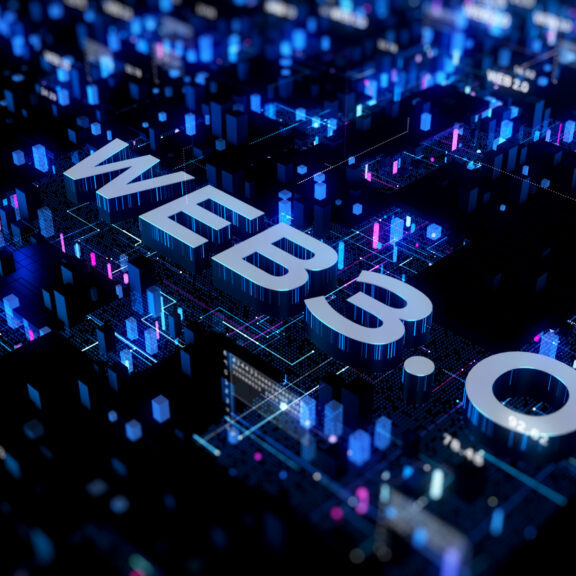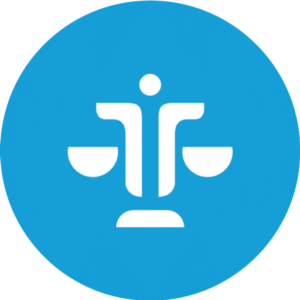Insights < BACK TO ALL INSIGHTS
Ifrah Law on Web3: Web3.0’s Solutions
Ifrah Law on Web3: Web3.0’s Solutions
By: Jake Gray
At issue in Web2.0 was the centralization of web platforms and protocols under a user-independent authority, and therefore users’ inability to meaningfully exert control over their web experience, interactions, and data. While such a dynamic provided significant benefits in making the web accessible to a much wider population by lowering the technical barrier to entry, a concomitant effect was that large technology companies retained much power and control over the web since most users rely on their products for most, if not all, of their web interactions.
Web3.0, a Return to Web1.0 Values
In the attempt to overcome such shortcomings of Web2.0, Web3.0 entities espouse values of decentralized ownership, control, and participation, which necessarily entails use of technologies that are inherently open and transparent. In other words, Web3.0 entities want to give control back to the users in much the same way that Tim Berners-Lee envisioned in the creation of Web1.0. From the pages of the World Wide Web Foundation’s description of the ideas of the early web community:
- Decentralisation: No permission is needed from a central authority to post anything on the web, there is no central controlling node, and so no single point of failure … and no “kill switch”! This also implies freedom from indiscriminate censorship and surveillance.
- Non-discrimination: If I pay to connect to the internet with a certain quality of service, and you pay to connect with that or a greater quality of service, then we can both communicate at the same level. This principle of equity is also known as Net Neutrality.
- Bottom-up design: Instead of code being written and controlled by a small group of experts, it was developed in full view of everyone, encouraging maximum participation and experimentation.
- Universality: For anyone to be able to publish anything on the web, all the computers involved have to speak the same languages to each other, no matter what different hardware people are using; where they live; or what cultural and political beliefs they have. In this way, the web breaks down silos while still allowing diversity to flourish.
- Consensus: For universal standards to work, everyone had to agree to use them. Tim and others achieved this consensus by giving everyone a say in creating the standards, through a transparent, participatory process at W3C. [1]
Such are the ideals of Web3.0, as the self-proclaimed natural successor to Web1.0.
To be clear, for now, Web3.0 is only a regulative ideal to which web platforms and protocols are attempting to conform and attain. The reason Web3.0 is only an ideal is that it’s only in its nascent stages, not yet actualized on a widespread scale. As a result, there is no meaningful way to predict the nature of the web after Web2.0 except through an understanding of what new technologies are trying to do as individual entities on a collective scale.
Web3.0—A Brief Technical Breakdown
Web3.0 technologies generally consist of open-source, decentralized networks and protocols overlying those networks, the product which are called blockchains. And Web3.0 platforms are built on these networks through its protocols. [2]
Blockchains are distributed network ledgers that exist on and through many devices, and are accessible by all participants, rather than being controlled or stored by one person or entity. [3] This decentralized scheme is in contrast to centralized databases—like a personal computer or the servers housing most web resources sent through the Internet—and all transactions are recorded on the “distributed ledger.” In this way, blockchain networks are just like the Internet, since the Internet is just an interconnected network of computers. No individual computer houses the Internet or blockchains.
The term “blockchain” is more literal than one might expect, as it essentially refers to a series of data “blocks” chained together within a larger decentralized computer cluster rather than a network owned by a single entity. Because blockchains are (typically) decentralized, an individual entity cannot directly influence it, in much the same manner that an individual user cannot influence the web’s protocol. [4]
When a machine connected to the computer cluster—referred to as a node—makes a “transaction” or any other exchange of data within the system and signs it with its private key, a new “block” is created that must be validated by other nodes. Each validated entry in the blockchain has its own “hash,” which is a unique digital signature that cannot be tampered with without dramatically changing the hash’s value. Blocks of data within the blockchain are cryptographically linked to each other once they are validated, creating a secure chain that cannot be tampered with or broken in any way and on top of which new transactions will be recorded. [5]
Lack of centralization is critical to the function of blockchains as the paradigmatic Web3.0 technology, because users equally access the distributed ledger. No user may falsify or erase network transactions or the characteristics of any resource housed within the network. Indeed, every transaction in a decentralized blockchain is necessarily permanent and transparent.
Web3.0 Technology in Action
There are several specific use-cases of blockchains. Though at root they all boil down to mere network data with respect to the blockchain itself, there are a wealth of robust platforms and applications that employ blockchains for transactions in addition to other capabilities.
The most popular use-case of blockchain technology is cryptocurrency, which are fungible tokens used as the medium of exchange for transactions within the blockchain network. Because every transaction or exchange of data must be validated across the network to establish ledger-wide consensus, cryptocurrencies are often awarded to those who validate transactions, in a process called proof-of-work, which can be energy-intensive. The two most popular forms of cryptocurrency are blockchain (BTC) and ethereum (ETH), which are the native cryptocurrencies to their own blockchains. As operating inside of a decentralized blockchain network, transactions enacted through cryptocurrencies require no central authority overseeing it. Indeed, the entire “economic system” needs no maintenance or oversight from a higher authority whatsoever because of the smart contract functionality employed in the blockchain’s protocols. [6]
Another use-case of blockchain technology is the non-fungible token, or “NFT.” As with blockchain, the term is a literal one. The first half of this term—“non-fungible”—is important because it distinguishes NFTs from other tokens like cryptocurrencies, which are necessarily interchangeable as currencies. As written in the Ifrah Law series on NFTs, NFTs are an attempt to endow digital objects, which are notoriously duplicable, with their own distinct identities that can be authenticated as such. Indeed, NFTs are exactly analogous to physical objects just in the digital realm—a way to differentiate this item from that one even if they are seemingly identical. For instance, consider the need to verify collectibles in real life of any sort and the complicated process of authenticity verification. From the moment an NFT is “minted,” which is the term for linking a digital file to the blockchain, its digital whereabouts are tracked and thus the item’s identity can always be easily verified. The most popular blockchains that house NFTs are the Ethereum and EOSIO blockchains.
Decentralized applications (“dApps”) or decentralized platforms are a similarly popular use-case of blockchain technologies, many of which employ either Ethereum or EOSIO infrastructure. For example, a large, decentralized finance industry has cropped up with much enthusiasm over the last few years, with platforms offering a range of products and services from cryptocurrency exchanges and prediction markets to crowdfunding and even insurance coverage. Such decentralized applications are governed by their users through “governance tokens,” which users hold in order to partake in deliberations on the platform.
Web 3.0’s Incipient Issues
There are pitfalls of Web3, however. Inherent to the blockchain is permanence or immutability. The old adage about how “everything you do on the Internet is permanent” would become a reality if the web were constructed with current Web3 technologies. As of now, this notion is technically an illusion, as everything on the web is (generally) stored on some central server or many different servers—delete the data from those servers and the data is gone (literally).
But that wouldn’t be the case with Web3.0, since the network’s infrastructure depends on its permanence as well as its distribution over an interconnected network. In other words, data is not stored centrally on a blockchain, and so cannot be forgotten unless the entire distributed network is too.
An easier way to understand this dynamic is by analogy: imagine the web in its current iteration as a giant screen in the center of town, on which everyone screens their own thoughts through a projector. Everyone has their own little plot, and if the source stops projecting, the image is off the web and the plot is empty. With Web3.0, every projector would be projecting the entire web all at once. So, if one projector stops working, all the others maintain the image, and nothing is changed. Removing blockchain network data would require discarding the entire distributed network and so all the computers on which it is stored.
Another potential pitfall of Web3 technologies is its current increased resistance to government regulation and enforcement, especially in comparison to Web2.0. The fact that much of the web in its current iteration relies upon centralized entities in some capacity, which themselves are readily regulated, has proven beneficial to lawmakers around the world concerned with web-user safety. In the United States, present federal and state regulatory frameworks made to address Internet and web services are presently ill-suited to address those same areas with decentralized structures. To illustrate, there has been an abundance of concern over instances of fraud committed by malevolent actors in the Web3 space who capitalize on capacities for anonymity and the dearth of oversight. “Rug pulls” are a particularly notorious example, in which project developers attract investors through hype only to suddenly, and without recompense, vanish. According to research by Privacy Affairs, 2022 saw more than 188,000 rug pulls on various blockchains. Users are rarely able to make themselves whole due to the anonymity of the blockchain.
In any case, any new technology has its growing pains—what matters is how they proceed through and by maturation. Every iteration of the web solves issues and brings new ones with it; and so, it is up to developers, technologists, and policy-makers alike to consider the best path forward.
In the next post of this series, we will discuss a budding industry within the Web3 ecosystem—gaming—including the issues endemic to the gaming industry in its current form and the solutions that Web3 proposes as well as the various changes made by the mere fact of Web3’s implementation.
[1] https://webfoundation.org/history-of-the-web/
[2] Platforms that may or may not be centralized.
[3] It’s important to note that not all blockchains are decentralized, though blockchains are generally assumed to be.
[4] This inability to personally manipulate the blockchain both increases security and complicates regulatory efforts.
[5] Only an individual who has been onboarded into the system and has the right RSA keys can access data within the blockchain, depending on whether the blockchain is centralized and whether permissions are setup as such.
[6] See: Deposit Method Standards and Cryptocurrency in Regulated iGaming and Sports Betting Industries





